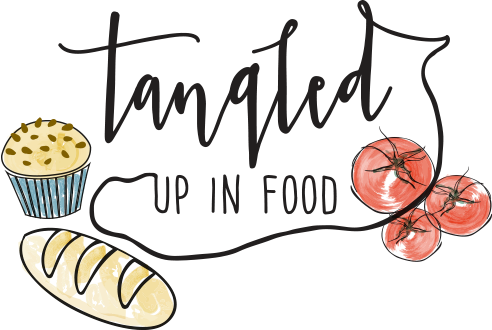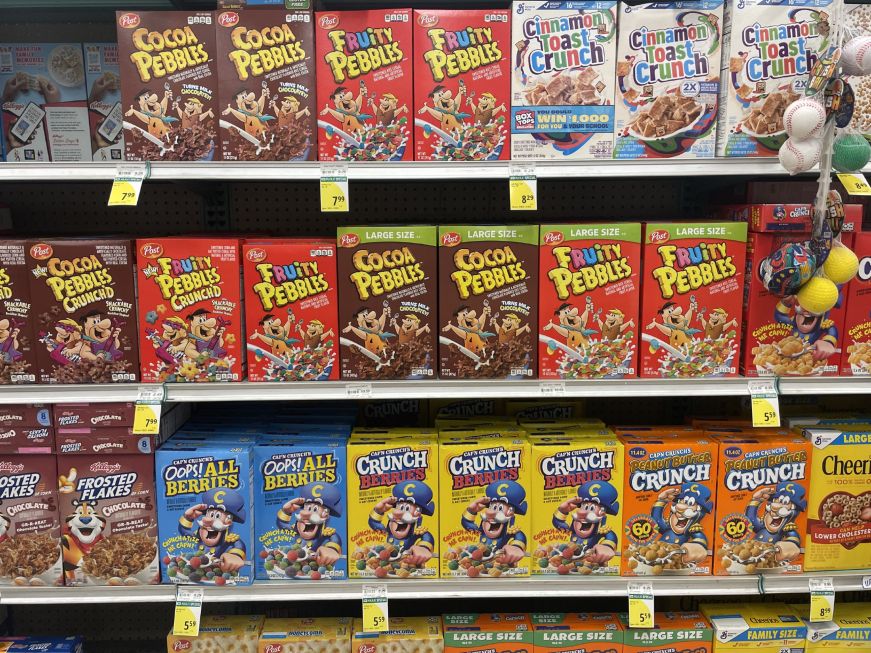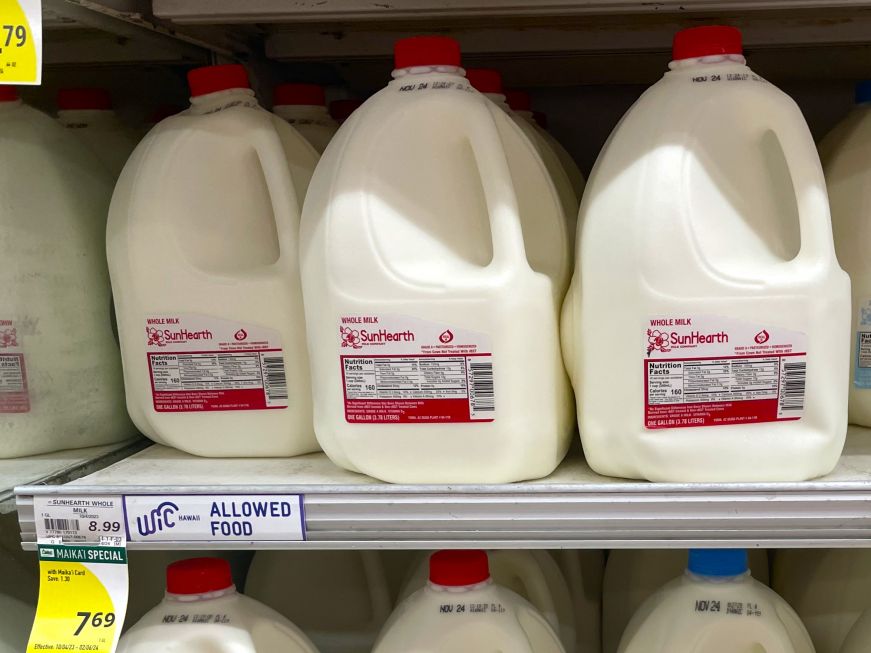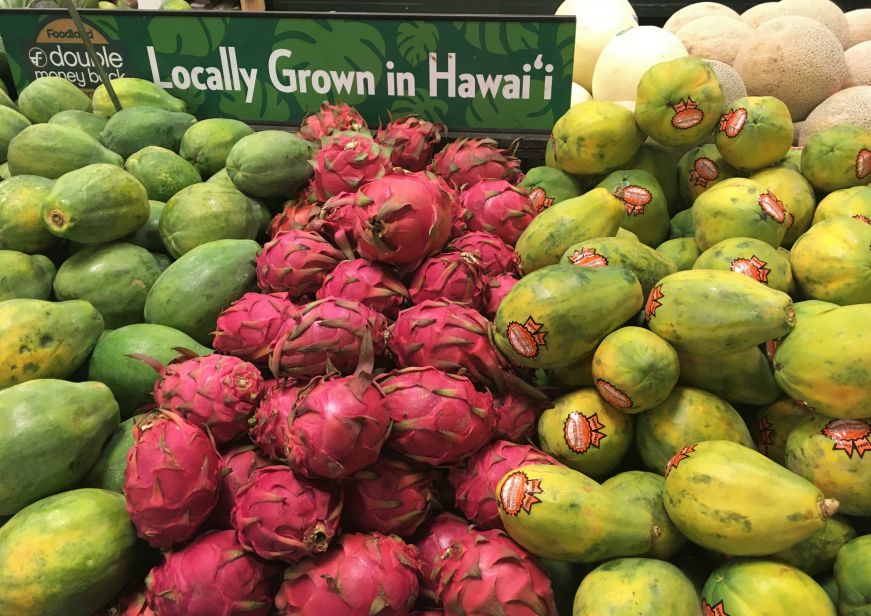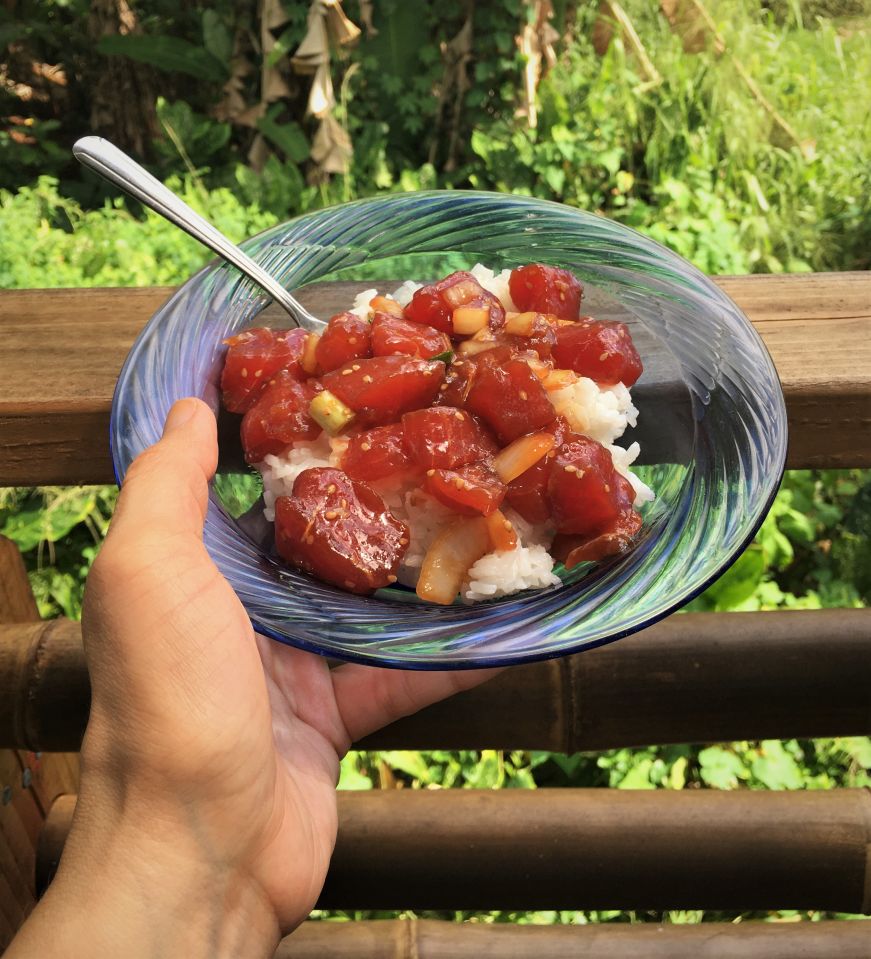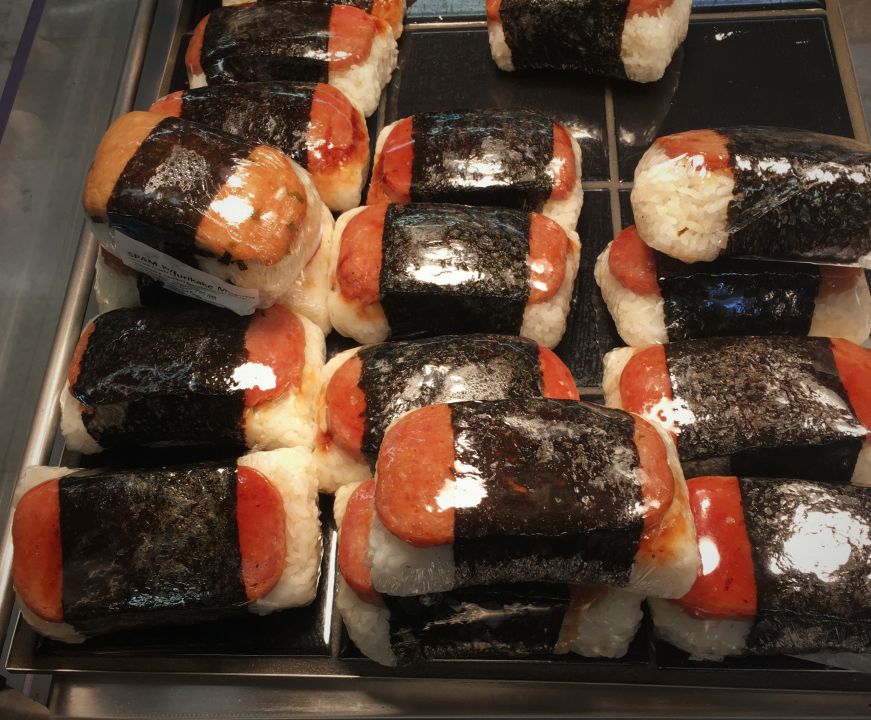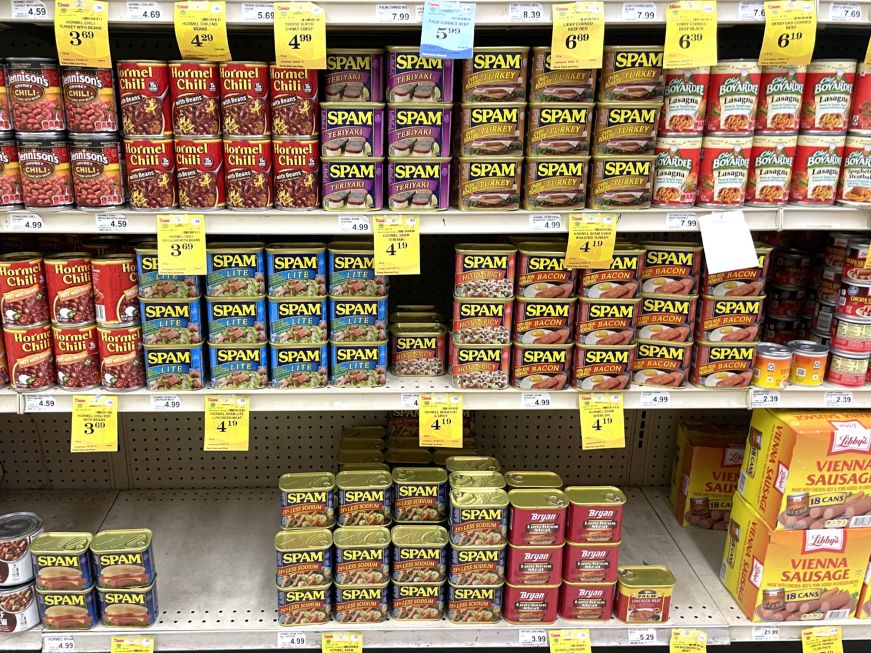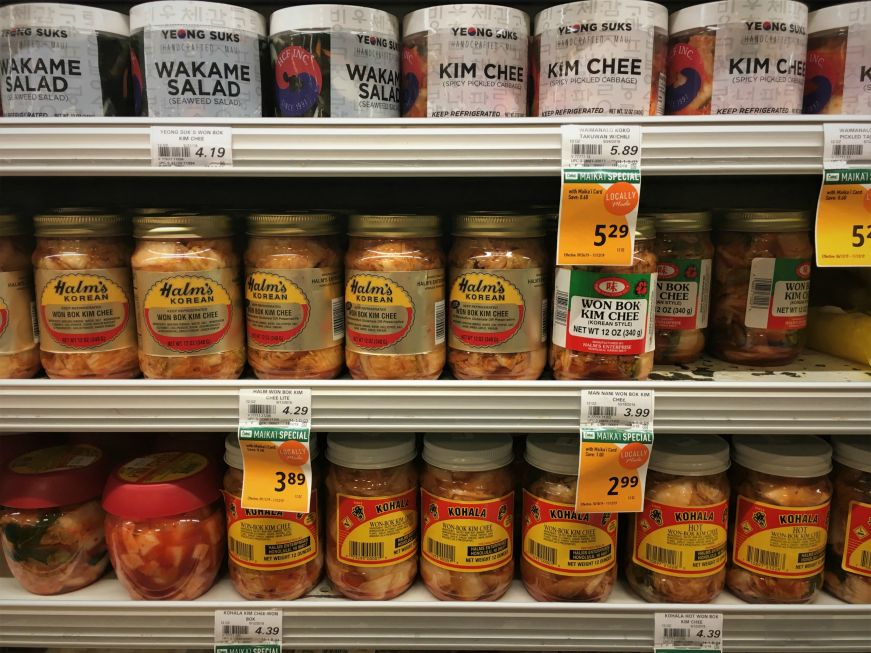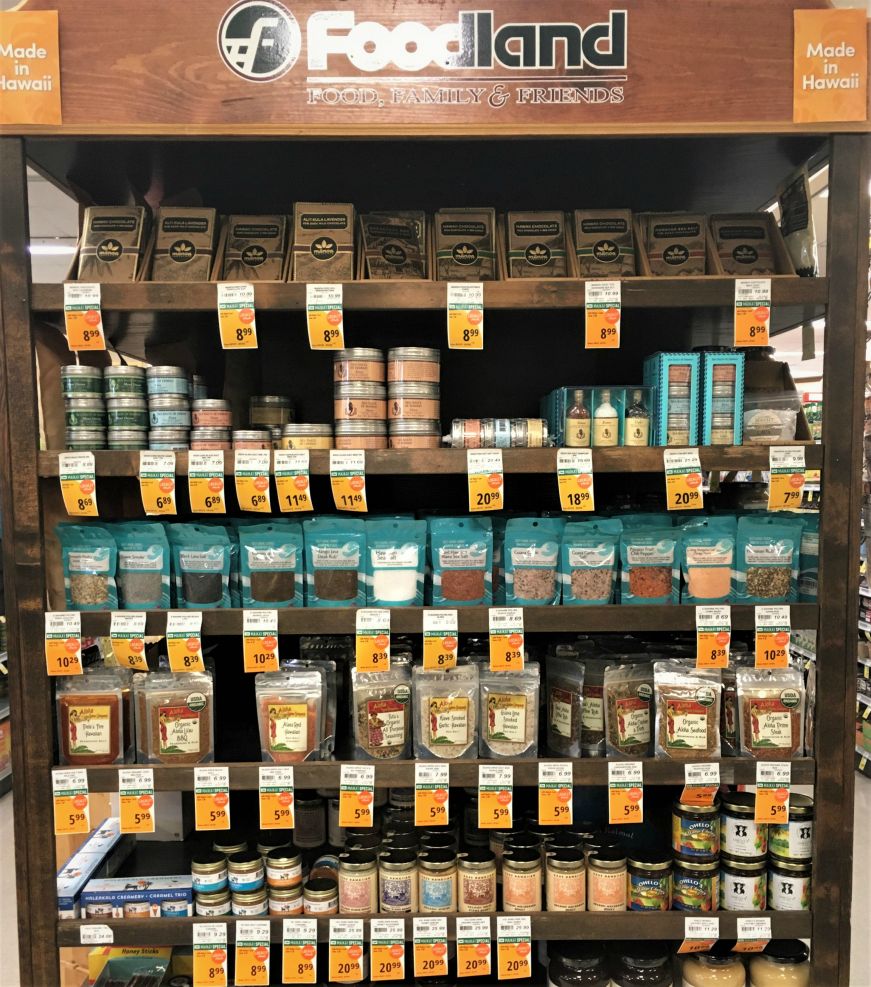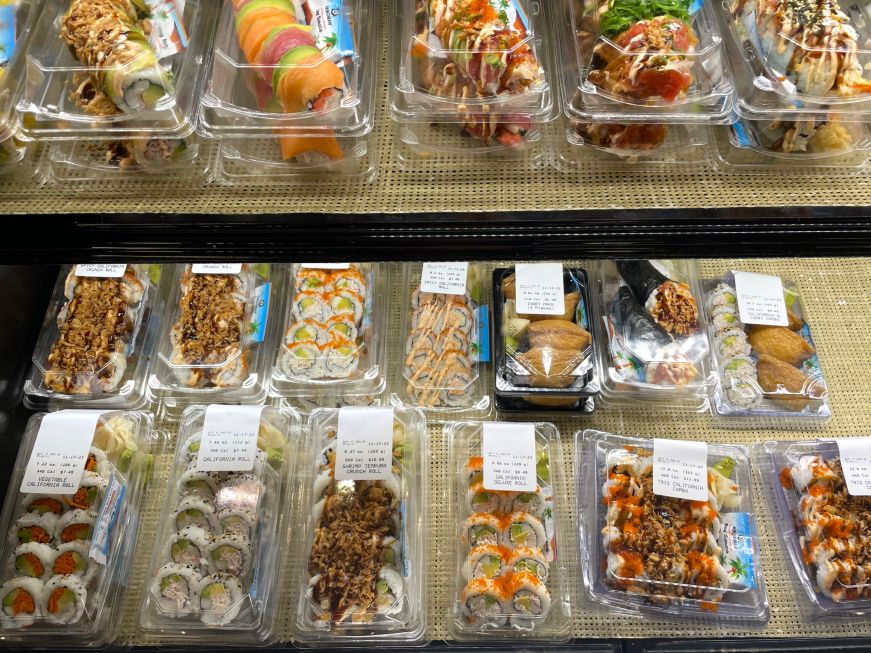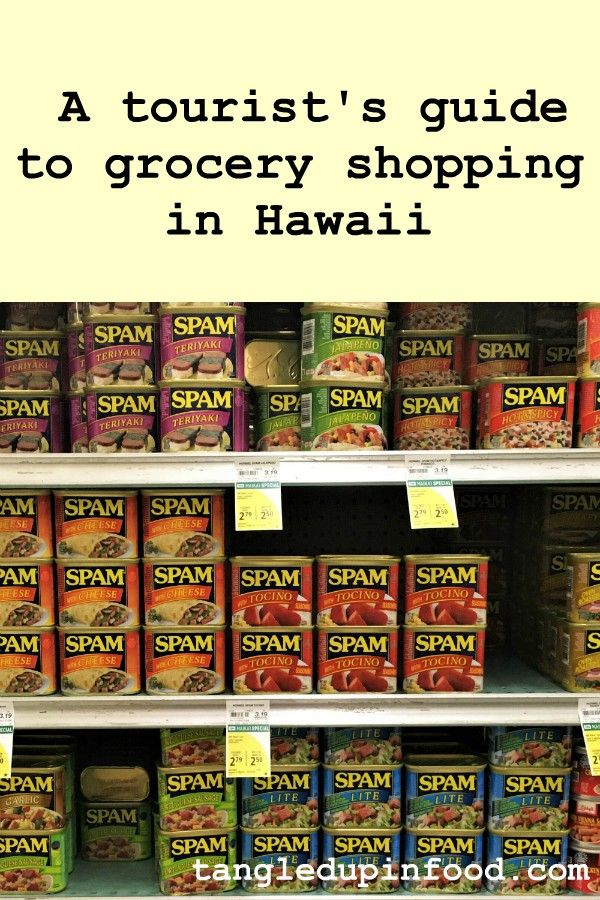This post was originally published on November 26, 2019 and was most recently updated on December 13, 2023.
One of my favorite things to do on vacation is to go grocery shopping. At home, grocery shopping can be a chore. On vacation, it's a chance to get a peek at how people live in another place and immerse myself in the local food culture. I spent hours in grocery stores during our two-week trip to Germany and sought them out in every port on our Norwegian cruise. In London, I walked to Sainsbury's each morning to buy breakfast pastries and wander the aisles. Even our getaway to Arizona included browsing through a selection of Mexican candy.
On my 2019 and 2023 trips to Hawaii, I spent quite a bit of time in grocery stores—we stayed in Airbnb rentals with kitchens and wanted to save some money by preparing food ourselves instead of eating out. Obviously, Hawaii is part of the U.S., but its location and unique culture make a grocery run a bit different from one on the mainland.
Whether you're wondering how to navigate a Hawaiian grocery store as a tourist or you're hoping to save some money in your vacation budget, here's a guide to grocery shopping in Hawaii.
Expect sticker shock.
Food is very expensive in Hawaii, since about 90 percent of it is imported from the mainland. Expect to pay a lot more than you do at home, especially if you frequent discount grocery chains like Aldi. For example, a gallon of milk at Foodland in Kihei was $7.69 (a gallon of milk at my Minnesota Super Target costs $3.99). A bag of baby carrots was $2.99 ($1.29 at home), and brand-name breakfast cereal was $5.59-$8.29 per box (about $3.99-$7.19 at home). One of the most eye-popping prices was a container of Quaker oats for $9.49—my local Target sells that package for $5.99, and I can get a similar product at Aldi for $4.35.
On the plus side, sourcing your food from the grocery store—even if you're relying on pre-made items from the deli or sushi counter—is usually much cheaper than dining out.
Tailor your grocery list to local tastes and ingredients.
To a certain extent, you can keep your grocery bill in check by changing up your grocery list. For example, at home I snack on a lot of dairy products. Since those tend to be quite costly in Hawaii (i.e. a package of string cheese that would cost about $2.99 at home rings up $6.99), I ate a lot more fruit than usual.
Rice is a popular local staple and prices are comparable to what you'll pay on the mainland. In Koloa, Kauai, $1.49 one-pound bag of rice was a component of several meals—over the course of our trip we made rice bowls topped with Spam, eggs, kimchi, avocado, tuna, and canned tom yum soup.
There are also a handful of items that are cheaper in Hawaii than in many parts of the U.S., such as locally grown avocados and tropical fruits like apple bananas, papaya, and dragonfruit. The quality of Hawaii-grown produce is also a revelation—as a Midwesterner whose avocados travel thousands of miles, I never realized how good they could taste. Apple bananas are so much more flavorful than the Cavendish variety you'll find in most U.S. supermarkets. I typically don't even like bananas, and I was literally eating a bunch a day. (Granted, apple bananas are a diminutive variety that are about 4-5 inches long, so two or three equals one "regular" banana).
Swing by the fresh seafood counter.
We found Hawaiian grocery stores, even smaller ones, to have well-stocked seafood counters. While you can pick up fish fillets and shrimp to cook back at your vacation rental, my favorite thing about the fresh seafood section is the prepared items, like poke and sushi.
Poke (pronounced poh-kay) is a traditional Hawaiian dish made with diced raw fish, soy sauce, sesame oil, and sea salt. If you enjoy sushi, you'll love poke. There are many variations, utilizing various types of fish and sometimes additional ingredients like wasabi, mayonnaise, and avocado. I'm partial to poke made with ahi tuna and shoyu (a mellower Japanese soy sauce), but honestly I've never eaten poke I didn't like.
Some grocery stores offer meals that include poke and rice—not a bad option if you're on the go, but if you have kitchen facilities it's a much better deal to just buy the poke (about a quarter of a pound per person) and cook the rice yourself.
I've also found the prepared sushi sold at Hawaiian grocery stores to be cheaper and of a better quality than what I can get at home, with rolls costing about $7.49-$11.99. One of my favorite meals in on our 2023 trip was from a sushi assortment from the Kihei Foodland, with two rolls and four pieces of nigiri for $15.99.
Check the deli and bakery for local specialties.
You don't need to dine out to experience Hawaiian cuisine—often, the grocery store deli is stocked with local specialties. There will definitely be Spam musubi, a compact portion of rice topped with a thin slice of Spam and wrapped with nori. One is a filling snack, and two or three can serve as a light meal.
Delis often offer hot bento boxes, with a meal-sized portion of rice and a Japanese meat dish like teriyaki beef or chicken karaage. Keep an eye out for deals—since food can only sit under heat lamps for a few hours before it needs to be discarded for food safety reasons, it is often deeply discounted just before the time limit is up to reduce food waste.
The bakery section is often stocked with items you won't find on the mainland, including purple-hued taro rolls and cakes, poi English muffins, and butter mochi.
Browse the impressive Spam selection.
Hawaii consumes more Spam than any other state, and that is quite evident in the canned meat aisle. Not only are there shelves and shelves of the stuff, there are several flavors, including maple flavored Spam, bacon Spam, oven roasted turkey Spam, hot & spicy Spam, jalapeno Spam, and hickory smoke Spam. Some of these flavors aren't readily available on the mainland, so this is your chance to try them.
Wondering what, exactly, to do with your can of Spam? The easiest option is to thinly slice it, fry it in a skillet with a bit of oil, and serve it for breakfast with eggs. You can also chop it up and add it to fried rice or mac 'n cheese.
Stop by the Asian foods aisle.
Asian-Americans are the largest ethnic group in Hawaii, including people of Japanese, Filipino, Chinese, and Korean descent. As a result, Hawaiian tastes are heavily influenced by those cultures' cuisines, and you can find many ingredients in grocery chains that you would have to source from specialty Asian markets on the mainland. As tourists, our go-tos in the Asian food aisle were ramen and other noodle soup packets, rice (so many varieties!), and kimchi (you'll find a great selection in the produce department).
One of my favorite dinners was a stir fry we cooked with locally-made kimchi and tofu and served over rice—easy, delicious, and budget-friendly.
Buy some souvenirs.
Tourism is a huge part of Hawaii's economy, and most grocery stores cater to travelers with a display of macadamia nuts, postcards, and trinkets near the store entrance. Prices are comparable to what you'll pay at gift shops, and it's a convenient way to get your souvenir shopping done. At larger grocery stores, I've even come across kids' books, Christmas ornaments, tropical-themed home decor, and locally made bath products.
Another fun grocery store souvenir is a store-branded reusable shopping bag—many of them feature Hawaiian-inspired designs, and if you purchase an insulated bag it will come in handy during your vacation for picnic lunches and beach days. I love my insulated bag decorated with cute cartoon versions of local food specialties, like shave ice and Spam musubi.
You can also find local products throughout the "regular" grocery store aisles that make good food souvenirs and gifts, including coffee, granola, baking mixes, seasonings, chocolate, and cookies. I'm partial to li hing mui candy, which is flavored with a sweet, salty, and sour seasoning made from dried plums, sugar, and licorice.
Shop at Foodland.
As a tourist, my favorite Hawaiian grocery store chain is Foodland. I find their fresh seafood department, sushi counter, and deli to be more comprehensive than other grocery stores, and their Maika'i Card is a free loyalty program that offers discounts (sometimes quite substantial) on many items. The prices noted above include the Maika'i discount.
Foodland is a Hawaii-owned and operated company, with over 30 locations on the Big Island, Maui, Oahu, and Kauai.
More blog posts about Hawaii
- 7 low-key things I loved about Hilo
- A guide to Hawaiian shave ice
- Kaua'i: Favorite places to eat, see, and stay
- Maui: Favorite places to eat, see, and stay
- 14 Best Stops on the Road to Hana
- Is it worth it to spend the night in Hāna, Maui?
If you enjoyed this post, pin it!
